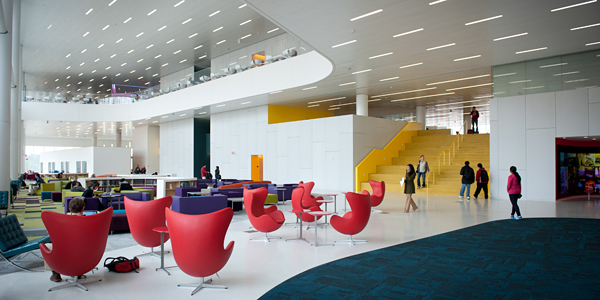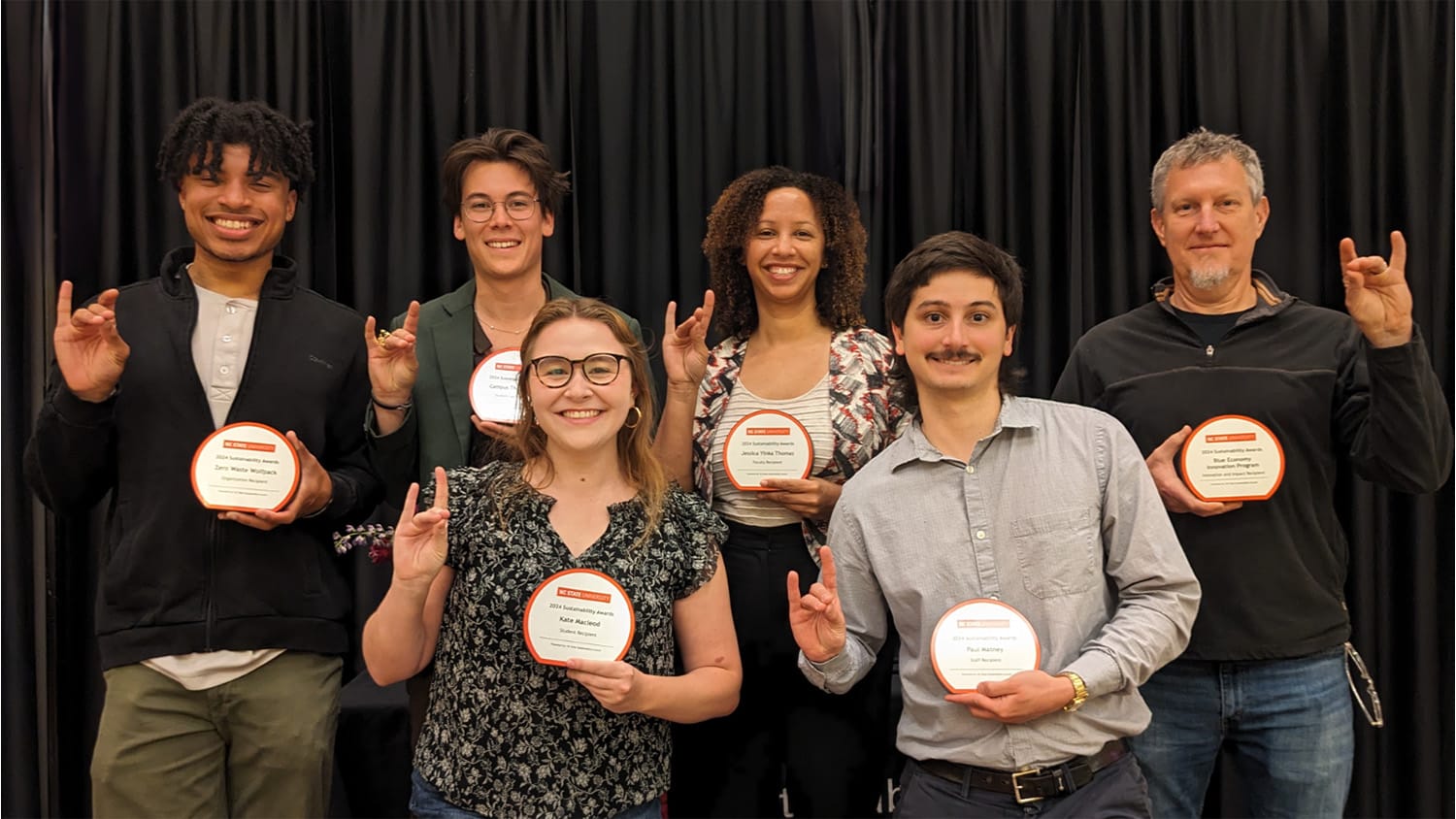New Buildings Easy on the Environment

Two of NC State’s newest buildings have received national recognition for energy efficiency and environmentally-friendly design. The James B. Hunt Jr. Library, one of the nation’s newest and most advanced libraries, has achieved Leadership in Energy and Environmental Design (LEED) silver certification and the Eastern 4-H Environmental Education and Conference Center, completed in 2011, has been certified LEED gold.
Because of the many benefits, including long-term cost savings in energy use and building maintenance, NC State has committed that all new construction projects larger than 20,000 gross square feet earn at least LEED silver certification.
Located on Centennial Campus, the Hunt Library’s sustainable design and construction includes a vegetated green roof to assist with rainwater runoff and keep the building cooler, solar thermal panels that provide the building’s hot water and a robotic book retrieval system that enabled the library to be 40 percent smaller. The building uses 31 percent less energy and 38 percent less water than a standard building its size.

On the banks of Bull Bay in Columbia, N.C., the 242-acre 4-H Center is a year-round conference and education center with sustainable design features including insulation made from recycled denim, recycled ceramic tile, concrete exterior panels, a rain garden and bamboo flooring. Occupancy sensors, low-E glass windows and an efficient geothermal system provide year-round energy savings.
Originally designed for LEED silver, the 4-H Center’s premier energy performance and alternative transportation features elevated it to LEED gold certification. The center is the university’s second LEED gold building, joining the Student Health Center addition on main campus. LEED certification is given by the U.S. Green Building Council.


